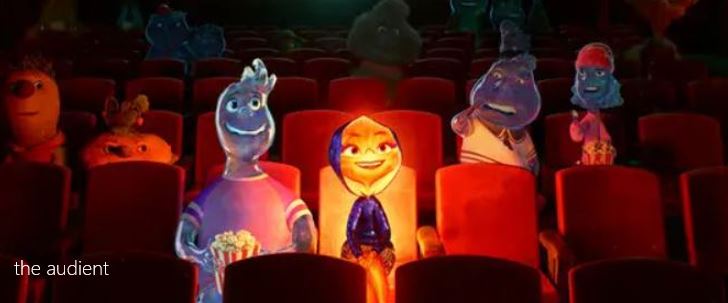 This has been a year of a lot of firsts at MIFF, mostly related to the online format of course. The whole thing is kind of like one giant first.
This has been a year of a lot of firsts at MIFF, mostly related to the online format of course. The whole thing is kind of like one giant first.But there's a first for me that also works in context of the traditional festival and its structure.
At the end of my seventh MIFF, I finally saw the closing night film.
It's not a huge surprise, really. The tickets for the opening and closing night films are always extra, like several times as much as a normal ticket, and the only reason I even went to the opening night film last year was that my wife had a film in the festival and she got complimentary passes.
The prospect of attending the closing night film was always complicated by this extra expense, but more than anything, I think the melancholy of the end of the festival may have been a key determining factor in my not attending. It's not like I actually get depressed when MIFF ends, but it's always an exciting time of year for me -- even watching from home -- so attending the film that signifies its ending has always seemed fraught with sorrow. If I'm going to get all gussied up, it should be for a film that looks ahead to two-and-a-half great weeks of movie-watching rather than one that looks back on that period in the past.
Anyway, my complimentary tickets this year included two passes to the spotlight films, something that MIFF could afford to give me since they were priced at only $6 more than the regular films, $20 as opposed to $14. If you're not going to have a gala evening with free alcohol and passed hors d'oeuvres, I guess you don't need to charge people in excess of $100 per ticket.
Since the opening night film First Cow sold out, as you will recall from this post, I spent my complimentary spotlight tickets on Wendy, the middle weekend spotlight film, and the closing night film, Pablo Larrain's Ema.
Yes, it's a bit confusing that I will have films called both Ema and Emma on my year-end list this year. The former is certainly not a Chilean version of the latter.
In fact, it starts off as something visionary and mesmerizing. The opening shot is of a lone traffic light hanging over an empty intersection, aflame, placed in an additional context of eerie melancholy by Nicolas Jaar's immersive score. (You may recall that Larrain likes a good in-your-face score, from his work with Mica Levi on Jackie.)
We then start to meet the main character, played by Mariana Di Girolamo, via the jaw-dropping production of her modern dance troupe. The poster above gives some indication of this. The dancers are in a giant warehouse space with a huge, almost tangible hologram of the sun taking up what looks like more than half the room. Whether this would be possible in real life or not, I can't say, but it is a hypnotizing vision here, as the dancers slink and gyrate in front of this fiery orb whose heat you can almost feel.
I wish the film maintained the momentum of this opening passage, whose vibe continues strong for at least the film's first 30 minutes. It starts to lose the thread as it goes, and left us with a lot of questions by the end -- and not the good kind, due to intentional ambiguity by the filmmaker. The story revolves Ema and her husband, the choreographer of the troupe (Gael Garcia Bernal), who give back a child they adopted after his firebug tendencies cause her sister to get severe burns across the side of her face. (No big surprise, I guess, since Ema is handy with a flamethrower herself.) The film should be about the emotionally impossible decision to give up on a child, but it strays from that to its peril, and gets sidetracked on inexplicable tangents like whether reggaeton music is considered good or not.
I recommend it for the vision and for the incredible cinematography and score, but there are a lot of asterisks on this one.
And I'm not reviewing this for ReelGood as I am done with that for this year, thank goodness. (Why review a movie that people have already missed their opportunity to see, is the thinking.)
Thus ends another MIFF. It was a really good one. I saw 11 films, which is pretty typical for me, two of which are very strong contenders for my top ten for the year, which is also pretty typical.
I'll look forward to returning to the brick and mortar version of the festival next year -- we hope -- but the online one has been good to me, and I'm so glad they did it.

No comments:
Post a Comment